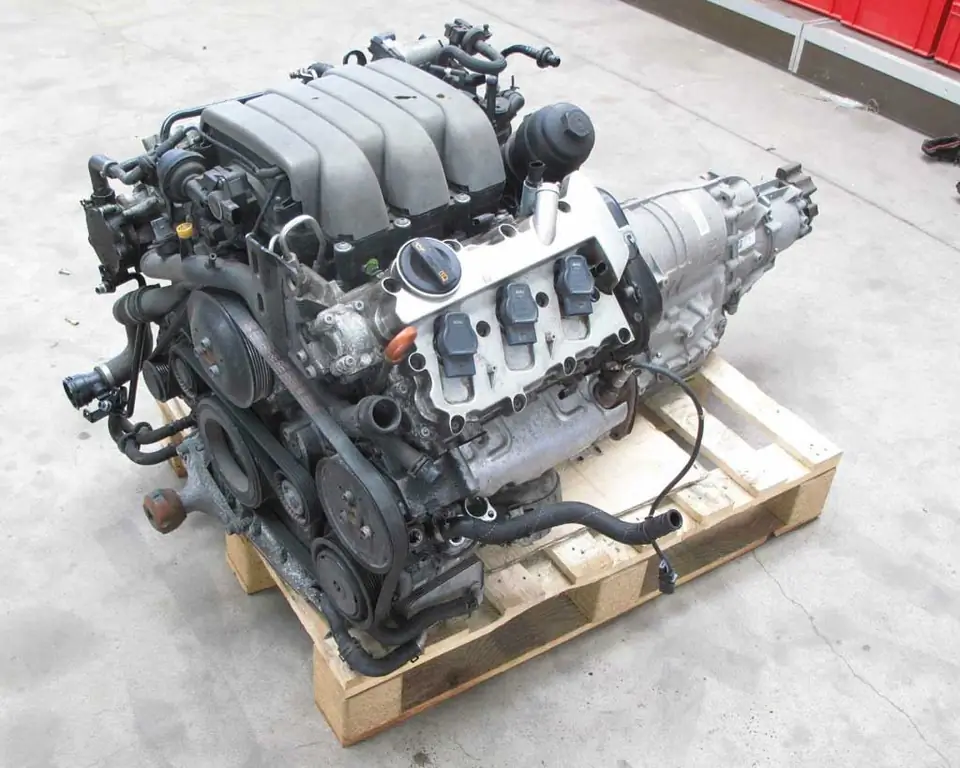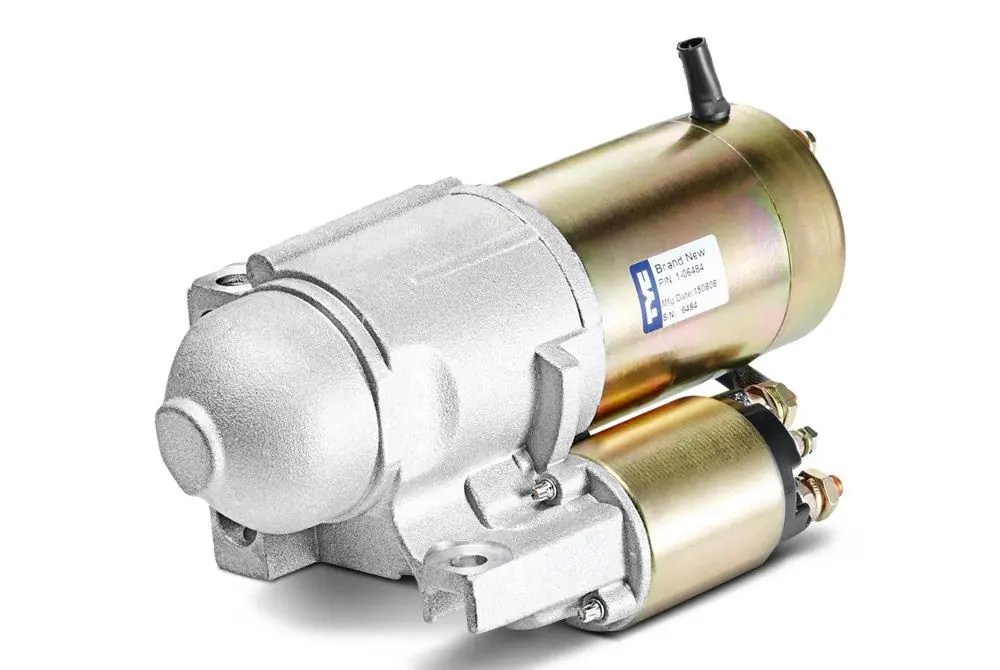2026 Author: Erin Ralphs | [email protected]. Last modified: 2025-01-22 21:14:14
Autobahn is part of the federal motorway system in Germany. The official German term is Bundesautobahn (BAB), which translates to federal highway.
Autobahns are roads with no speed limits. The exception is repaired areas that do not meet the standards, and located in the federal lands (regions), which are subject to restrictions. However, autobahns in Germany have a recommended speed limit. Throughout the country, it is no more than 130 km/h.

Features and classification
Like highways in other countries, autobahns have multiple lanes for traffic in each direction. In the center there is necessarily a dividing barrier. Interchanges with intersecting highways are carried out mainly in the form of a cloverleaf, with lanes for acceleration and deceleration.

Autobahn numbering
The current autobahn numbering system was introduced in 1974. All names begin with a capital "A"stands for Autobahn) followed by a space and the autobahn number. What does this number mean? Major federal highways have a single-digit number. Shorter autobahns with regional significance have two digits in the number. The system looks like this:
- From 10 to A 19 - in eastern Germany (Berlin, Saxony-Anh alt, parts of Saxony and Brandenburg).
- 20 to A 29 - in northern and northeastern Germany.
- From 30 to A 39 - in Lower Saxony and Thuringia.
- From 40 to A 49 - in the Rhine-Ruhr and Frankfurt am Rhein-Main conglomerates.
- From 50 to A 59 - in the Lower Rhine region in Cologne.
- From 60 to A 69 - in Rhineland-Palatinate, Saarland, Hesse and northern Baden-Württemberg.
- 70 to A 79 - in Thuringia, northern Bavaria and parts of Saxony.
- From 80 to A 89 - in Baden-Württemberg.
- From 90 to A 99 - in Bavaria.
Also, there are very short autobahns in Germany. This was introduced specifically to offload the main roads from local traffic. They are numbered with a three-digit number. The first digit corresponds to the region from the classification given above. Routes from east to west have an even number in the name, from north to south, respectively, odd.
History
Planning for the construction of autobahns began in the mid-1920s. But the implementation of the idea into reality was very slow due to economic problems and lack of political support. One of the projects was a road crossing Germany along the following route: from northern Hamburg, the centralFrankfurt am Main to Swiss Basel. Part of this highway was built, but work was stopped by the Second World War. The first fully built autobahn was the road between Cologne and Bonn. The work was completed in 1932. Today it is the Bundesautobahn A 555. Then this route was not yet called the autobahn. It was a highway with two lanes in each direction with no crossroads, no pedestrians, no bicycles, no animal traffic.
In 1933, just after the Nazi takeover of Germany, Hitler enthusiastically embarked on an ambitious autobahn project. It was headed by the inspector general of German road construction Fritz Todt. By 1936, there were 130,000 jobs directly in construction and another 270,000 in the supply chain of machinery, steel, concrete, machinery and other resources.

Motorways and car racing
What is the German autobahn without speed driving? The history of German motorways is closely connected with motor racing. So, in the thirties of the 20th century, a world speed record of 432 kilometers per hour was set, which remained unsurpassed for a long time. The author of the record is Rudolf Caraciolla. However, motorway racing was periodically marred by driver deaths. For example, the German driver Rudolf Rosemeyer from the Mercedes-Benz team crashed on the Frankfurt-Darmstadt section during a car race.
Highways during World War II
In wartime, chic German roads also found a use. Often motorways were used inas runways for the Luftwaffe, the German military aviation.
On the other hand, the autobahns were clearly not suitable for moving military equipment and cargo. The tanks pushed through the asph alt of the roads and could not move quickly along them. It is not surprising that the pragmatic Germans preferred to use rail transport for the transfer of goods and equipment.

Infrastructure
Autobahn is the definition of not only a large-scale highway, but also its infrastructure. Many facilities along highways serve the purpose of ensuring safe and comfortable travel on these roads.
In Germany, petrol stations are located on the motorways every few kilometers. It is simply impossible to stay without gasoline on the German motorway.
There is also a well-developed network of dedicated car parks equipped with toilets for tired drivers to rest.
At the same time, stopping and parking along the entire length of the entire highway is strictly prohibited and punishable by fines. Violations like these pose a serious risk of a serious traffic accident.

Speed limits on highways
For passenger cars there is no speed limit per se on German motorways. Each driver himself determines the speed that is comfortable for driving, guided by the technical characteristics of the car, his driving skills and the ability to soberly assesssituation.
Speed limits on such roads are set only for certain modes of transport. For example, motorcycles with a trailer and buses carrying standing passengers are required to move at a speed of no more than 60 kilometers per hour. Buses, trucks and cars with trailers must not accelerate faster than 80 kilometers per hour. A limit of 100 kilometers per hour is set for buses and special certified cars with a trailer for high-speed driving.
Also, restrictions exist at road junctions and exits, in places where road works are carried out. It should be noted that the approach to road repair in Germany is very different from the Russian version. It is customary to change asph alt when its nominal service life has passed, and not when pits half a meter deep have appeared on it. Because of this, road works on German motorways are carried out quite often.
Recommended:
Contract engine: how to understand what it is? Definition, characteristics, features of work, comparison, pros and cons

If the engine is out of order and it is impossible to overhaul, then the question naturally arises, where and what kind of engine to buy. A contract engine is a good alternative to a new original one and is much better than a used engine from disassembly
Starting engine: concept, types, technical characteristics, starting rules and operating features

The starter motor, or "starter", is a 10 horsepower carbureted internal combustion engine that is used to help start diesel tractors and machinery. Similar devices were previously installed on all tractors, but today a starter has come to replace them
Tanker for transportation of petroleum products: features and safety rules

The tank truck for transportation of oil products belongs to the category of trucks and is complemented by a special capacity. It is subject to high safety requirements, like other vehicles used for the transport of dangerous goods
"Lada-Kalina": ignition switch. Device, principle of operation, installation rules, ignition system, advantages, disadvantages and features of operation

Detailed story about the ignition switch Lada Kalina. General information and some technical characteristics are given. The device of the lock and the most frequent malfunctions are considered. The procedure for replacing with your own hands is described
Ignition timing: features, rules and recommendations

Ignition advance is a very important parameter on which the stability and correct operation of injection and carburetor engines operating on gasoline or gas directly depend. Let's look at what the ignition timing is, what it affects, how to determine and adjust it, including on gas equipment

